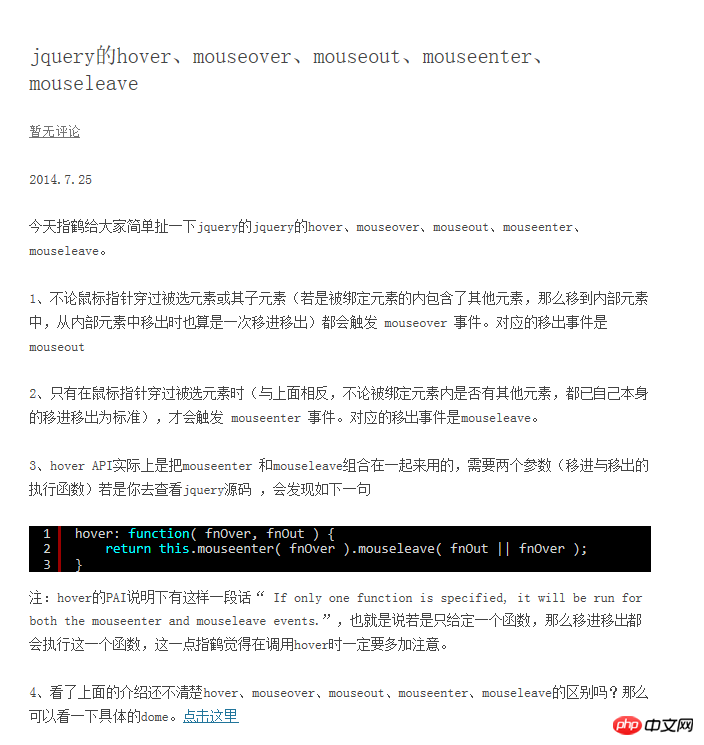Heim >Web-Frontend >js-Tutorial >Beispielanalyse von jquery unter Verwendung von „on', um das Mouseleave-Ereignis und das Mouseenter-Ereignis zu binden, um ein Mouse-Hover-Ereignis zu realisieren
Beispielanalyse von jquery unter Verwendung von „on', um das Mouseleave-Ereignis und das Mouseenter-Ereignis zu binden, um ein Mouse-Hover-Ereignis zu realisieren
- 黄舟Original
- 2017-06-28 10:00:011933Durchsuche
//HTML脚本
<spandata-helperinfo="PortfolioTeam"class="icon help"></span>
//JS脚本
$(document).on({
mouseenter:function () {
var HelpMsgCode = $(this).attr("data-helperinfo");//Gets the current object property values
$.ajax({
type:"GET",
url:"/Portfolio/GetHelpMessageByCode",
//url: "/Subscription/GetHelpMessageByCode",
data: { Code: HelpMsgCode },
dataType:"json",
success:function (item) {
var varJson = $.parseJSON(item.data); //string Turn json
var varContent = varJson.Root.HelpMessage.Content; //Gets the specified JSON node contents
var varMsgHtml = "<span class='bubble'>" + varContent + "</span>";//Structural HTML
$(".icon.help").append(varMsgHtml);//Additional HTML to a specified location
}
});
},
mouseleave:function () { //When the mouse leaves, a prompt box disappears
$(".icon.help").html("");//Emptying the balloon
}
},".icon.help");
Das obige ist der detaillierte Inhalt vonBeispielanalyse von jquery unter Verwendung von „on', um das Mouseleave-Ereignis und das Mouseenter-Ereignis zu binden, um ein Mouse-Hover-Ereignis zu realisieren. Für weitere Informationen folgen Sie bitte anderen verwandten Artikeln auf der PHP chinesischen Website!
Stellungnahme:
Der Inhalt dieses Artikels wird freiwillig von Internetnutzern beigesteuert und das Urheberrecht liegt beim ursprünglichen Autor. Diese Website übernimmt keine entsprechende rechtliche Verantwortung. Wenn Sie Inhalte finden, bei denen der Verdacht eines Plagiats oder einer Rechtsverletzung besteht, wenden Sie sich bitte an admin@php.cn
Vorheriger Artikel:jQuery: Verwendung und Definition des Mouseleave-EreignissesNächster Artikel:jQuery: Verwendung und Definition des Mouseleave-Ereignisses
In Verbindung stehende Artikel
Mehr sehen- Eine eingehende Analyse der Bootstrap-Listengruppenkomponente
- Detaillierte Erläuterung des JavaScript-Funktions-Curryings
- Vollständiges Beispiel für die Generierung von JS-Passwörtern und die Erkennung der Stärke (mit Download des Demo-Quellcodes)
- Angularjs integriert WeChat UI (weui)
- Wie man mit JavaScript schnell zwischen traditionellem Chinesisch und vereinfachtem Chinesisch wechselt und wie Websites den Wechsel zwischen vereinfachtem und traditionellem Chinesisch unterstützen – Javascript-Kenntnisse

